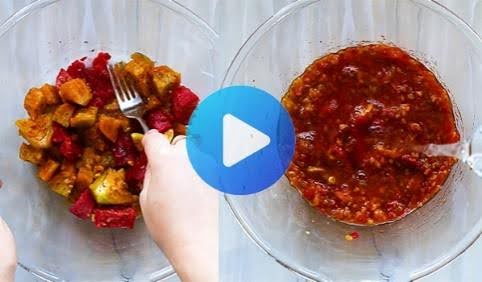When you first start thinking about a ketogenic lifestyle, one of the biggest worries I hear, especially from women I work with, is giving up favorite foods. Pasta often tops that list. It’s comforting, it’s versatile, and it’s a staple in many households. But traditional pasta, made from wheat flour, is loaded with carbohydrates, the very thing we aim to drastically reduce on keto. Does that mean saying goodbye to pasta dishes forever? Absolutely not.
I remember feeling that same pang of sadness when I first explored low-carb eating. Pasta bolognese, creamy fettuccine alfredo, simple spaghetti with marinara – these were meals I loved. The good news is, the world of keto has exploded with creativity. There are now so many fantastic ways to enjoy pasta-like meals without derailing your progress. It’s all about finding the right substitutes that mimic the texture and vehicle-for-sauce function of traditional pasta.
This journey isn’t just about cutting carbs; it’s about finding sustainable, enjoyable ways to eat that support your health and weight loss goals. For many women, managing blood sugar and insulin levels is key, and reducing high-carb foods like pasta can make a significant difference. Let’s explore some of the best keto pasta alternatives out there.
You Might Be Interested In: Delicious Keto Meals Tailored to Your Needs With Custom Keto Diet
Why Traditional Pasta Doesn’t Work for Keto
Before we dive into the alternatives, let’s quickly understand why regular pasta is a no-go on keto. The ketogenic diet focuses on shifting your body’s primary fuel source from carbohydrates (glucose) to fat (ketones). To do this, you need to keep your daily carbohydrate intake very low, typically between 20-50 grams of net carbs per day.
A single cup of cooked spaghetti contains roughly 40-45 grams of carbohydrates. That’s potentially your entire day’s carb allowance in one go. Eating traditional pasta will quickly kick you out of ketosis, halting the fat-burning process and potentially causing energy crashes and cravings. It spikes blood sugar and insulin, which is precisely what we want to avoid for steady energy, fat loss, and overall metabolic health.
Vegetable-Based Pasta Alternatives
One of the easiest and healthiest ways to replace pasta is by using vegetables. Nature provides us with some amazing options that can be spiralized, cut, or scooped to resemble pasta shapes.
Zucchini Noodles (Zoodles)
Zucchini noodles, or “zoodles,” are probably the most popular vegetable pasta substitute. They are incredibly easy to make, especially if you have a spiralizer.
- What they are: Long, spaghetti-like strands made from fresh zucchini.
- How to make them: Use a spiralizer (handheld, countertop, or electric) to turn a zucchini into noodles. You can also use a julienne peeler or even just a regular vegetable peeler to create wider, fettuccine-like ribbons.
- Nutrition: Very low in carbs (about 3-4 grams of net carbs per medium zucchini), high in water, and provides vitamins like Vitamin C and potassium.
- Taste and Texture: Zoodles have a mild, slightly sweet flavor that doesn’t overpower sauces. Their texture is tender-crisp when cooked properly. The key is not to overcook them, or they become watery and mushy.
- Cooking Tips: Sauté zoodles in a pan with a little olive oil or butter for just 2-3 minutes until they are slightly softened but still have a bite (al dente). You can also eat them raw. Avoid boiling them, as this makes them soggy. Patting them dry with paper towels before cooking helps remove excess moisture.
- Best pairings: They work well with almost any sauce – marinara, pesto, alfredo, meat sauce, or even just garlic and oil.
Spaghetti Squash
Spaghetti squash is nature’s pasta. When cooked, the flesh naturally separates into thin, spaghetti-like strands.
- What it is: A winter squash with a stringy flesh.
- How to make it: Cut the squash in half lengthwise, scoop out the seeds, brush with oil, season, and roast cut-side down in the oven (around 400°F or 200°C) for 30-50 minutes, depending on size, until tender. Once cooled slightly, use a fork to scrape out the strands. You can also cook it in the microwave or Instant Pot.
- Nutrition: Low in carbs (around 5-7 grams of net carbs per cup, cooked), a good source of fiber, vitamins, and minerals.
- Taste and Texture: It has a very mild, slightly nutty flavor. The texture is similar to angel hair pasta – thin and slightly crunchy if not overcooked.
- Cooking Tips: Roasting generally yields the best texture. Avoid adding too much liquid during cooking. Like zoodles, it pairs well with robust sauces that can stand up to its texture.
- Best pairings: Excellent with hearty meat sauces, marinara, or baked with cheese like a casserole.
Cucumber Noodles
Similar to zoodles, cucumber noodles offer a refreshing, crisp alternative, especially good for cold dishes.
- What they are: Spiralized or peeled strands of cucumber.
- How to make them: Use a spiralizer or peeler, just like with zucchini. English cucumbers work well as they have fewer seeds.
- Nutrition: Extremely low in carbs (about 2-3 grams of net carbs per cup), very high water content.
- Taste and Texture: Crisp, cool, and refreshing. Best served raw.
- Cooking Tips: No cooking required. Pat them dry to avoid a watery dish.
- Best pairings: Ideal for cold “pasta” salads, Asian-inspired noodle dishes with peanut sauce, or light vinaigrettes.
Eggplant Lasagna Sheets
While not exactly noodles, thinly sliced eggplant makes a fantastic substitute for lasagna sheets.
- What they are: Thin slices of eggplant used in place of pasta layers.
- How to make them: Slice eggplant lengthwise into thin planks (about 1/4 inch thick). To prevent sogginess, it’s often recommended to salt the slices and let them sit for 30 minutes to draw out excess moisture, then pat them dry. You can grill or lightly pan-fry the slices before layering.
- Nutrition: Low in carbs (around 3-4 grams of net carbs per cup, sliced), good source of fiber.
- Taste and Texture: Eggplant has a mild flavor that absorbs sauces well. When baked in lasagna, it becomes soft and tender.
- Cooking Tips: Salting is key. Pre-cooking the slices slightly helps improve the final texture.
- Best pairings: Perfect for keto lasagna, layered with meat sauce, ricotta (or a keto substitute), mozzarella, and parmesan.
Cabbage Noodles
Shredded or thinly sliced cabbage can mimic wider noodles like fettuccine or pappardelle.
- What they are: Thinly sliced or shredded cabbage leaves.
- How to make them: Slice a head of cabbage thinly.
- Nutrition: Low in carbs (around 3-4 grams of net carbs per cup, shredded), high in fiber and Vitamin K.
- Taste and Texture: Cabbage has a distinct flavor, which mellows when cooked. It becomes tender but can retain a slight crunch.
- Cooking Tips: Sauté cabbage in butter or oil until tender-crisp. It holds up well to heavier sauces.
- Best pairings: Works surprisingly well with creamy sauces like alfredo, cheese sauces, or in stir-fries. Also great in deconstructed egg roll bowls.
Other Low-Carb Pasta Alternatives
Beyond vegetables, there are other products specifically designed to be keto-friendly pasta substitutes.
Introducing: Benefits of Custom Meal Plans With Keto Diet
Shirataki Noodles (Miracle Noodles)
These noodles have gained immense popularity in the keto community because they contain virtually zero net carbs and calories.
- What they are: Translucent, gelatinous noodles made from glucomannan fiber, which comes from the root of the konjac plant (also known as konnyaku).
- How to make them: They usually come packed in liquid, which has a slightly fishy odor. This smell is normal and rinses away completely. To prepare, drain the noodles, rinse them thoroughly under cold water for a few minutes, and then dry-pan fry them for a couple of minutes to remove excess water and improve texture.
- Nutrition: Essentially zero calories and zero net carbs. High in soluble fiber (glucomannan).
- Taste and Texture: Shirataki noodles are flavorless and absorb the taste of whatever sauce you pair them with. Their texture is their most defining characteristic – slightly rubbery or gelatinous. Proper preparation (rinsing and dry-frying) is crucial to achieve the best possible texture. They come in various shapes like spaghetti, fettuccine, and even rice.
- Cooking Tips: Rinse, rinse, rinse. Dry pan-frying is not optional if you want a palatable texture. Add them to your sauce at the very end of cooking, just to heat through.
- Best pairings: Because they are flavorless, they need flavorful sauces. Asian dishes (stir-fries, pho), creamy sauces, and hearty meat sauces work well. The texture might take some getting used to for some people.
Palmini Noodles
Palmini is another plant-based option made from hearts of palm.
- What they are: Noodles made from hearts of palm, sliced to resemble linguine or lasagna sheets.
- How to make them: They usually come canned or in pouches, packed in water. Like shirataki, they need to be rinsed well. Some people find boiling them for 5-10 minutes helps soften the texture, making it more pasta-like.
- Nutrition: Low in carbs (around 2-4 grams of net carbs per serving), low in calories, good source of fiber.
- Taste and Texture: Hearts of palm have a mild flavor, slightly reminiscent of artichokes. Rinsing helps neutralize this. The texture is firmer than zucchini noodles, closer to al dente pasta, especially after boiling.
- Cooking Tips: Rinse thoroughly. Consider boiling briefly for a softer texture before adding to your sauce.
- Best pairings: Versatile like zucchini noodles. Works well with marinara, pesto, alfredo, and in baked dishes.
Kelp Noodles
Made from seaweed, kelp noodles offer a crunchy alternative.
- What they are: Semi-transparent noodles made from kelp (seaweed), water, and sodium alginate.
- How to make them: They come packaged and ready to eat after rinsing. They have a crunchy texture initially. To soften them, you can soak them in warm water with a bit of lemon juice or baking soda for 10-20 minutes, then rinse again.
- Nutrition: Very low in carbs (around 1 gram of net carbs per serving), low in calories, rich in iodine.
- Taste and Texture: They are virtually flavorless. The texture is their main feature – crunchy when raw, softer (but still with some bite) after soaking.
- Cooking Tips: Decide if you want them crunchy (rinse only) or softer (soak). Add to dishes at the end.
- Best pairings: Great in cold salads, Asian-style dishes, or anywhere you want a bit of texture. Less ideal for traditional Italian sauces if you prefer a soft noodle.
Homemade Keto Pasta
For the dedicated keto cook, making your own low-carb pasta is an option. These recipes often use a combination of keto-friendly flours and binders.
- Common Ingredients: Almond flour, coconut flour, lupin flour, mozzarella cheese (fathead dough style), cream cheese, eggs, xanthan gum, psyllium husk.
- How to make them: Recipes vary widely. Some involve making a dough similar to “fathead dough” (mozzarella and cream cheese based) which is then rolled thin and cut. Others use egg and cream cheese mixtures cooked like crepes and sliced. Some use keto flours mixed with binders and eggs, requiring a pasta machine or careful rolling and cutting.
- Nutrition: Carb count varies depending on the ingredients, but generally much lower than traditional pasta. Often higher in fat and protein.
- Taste and Texture: This depends heavily on the recipe. Fathead-style pasta can be cheesy and slightly chewy. Egg-based noodles are delicate. Flour-based versions aim to mimic traditional pasta texture but can sometimes be denser or more fragile.
- Cooking Tips: Follow specific recipe instructions carefully. These pastas can be more delicate than wheat pasta. Cook briefly in boiling water or add directly to sauces.
- Best pairings: Depends on the type of homemade pasta. Fathead pasta works well baked or with robust sauces. Egg noodles are good with lighter cream or butter sauces.
Choosing the Right Alternative for You
With so many options, how do you choose? Consider these factors:
- Texture Preference: Do you want something soft like zoodles, firm like Palmini, slightly rubbery like shirataki, or crunchy like kelp noodles?
- Flavor: Most vegetable options are mild, while shirataki and kelp are neutral. Homemade pasta flavor depends on the ingredients.
- Preparation Time: Zoodles and cucumber noodles are quick. Spaghetti squash takes time to roast. Shirataki and Palmini require rinsing and sometimes pre-cooking. Homemade pasta is the most time-consuming.
- Sauce Pairing: Heartier sauces need sturdy noodles (spaghetti squash, Palmini, cabbage, eggplant). Lighter sauces work well with zoodles or kelp noodles. Flavorless noodles like shirataki need bold sauces.
- Availability and Cost: Vegetables are widely available and generally affordable. Shirataki, Palmini, and kelp noodles might be found in larger supermarkets or health food stores, or online, and can be more expensive. Homemade ingredients might require sourcing keto flours.
I often suggest starting with zoodles or spaghetti squash as they are accessible and easy to work with. Don’t be afraid to experiment. You might find you prefer different alternatives for different types of dishes.
Making Keto Pasta Dishes Delicious
The key to loving keto pasta alternatives is treating them right and pairing them with amazing, flavorful, keto-friendly sauces.
- Don’t Overcook Vegetables: Soggy zoodles or mushy spaghetti squash are unappealing. Cook vegetable noodles briefly until just tender-crisp.
- Manage Moisture: Zucchini and spaghetti squash release water. Pat zoodles dry before cooking. Let spaghetti squash drain after scraping. Consider adding vegetable noodles to the sauce at the very end to prevent the sauce from becoming watery.
- Prepare Shirataki Properly: Rinse well and dry-fry shirataki noodles to minimize their unique smell and improve texture.
- Boost Flavor: Since many alternatives are mild or neutral, focus on building flavor in your sauce. Use quality fats (olive oil, butter, avocado oil), herbs, spices, garlic, onions (in moderation), and good quality protein.
- Add Fat and Protein: Keto meals should be satisfying. Ensure your pasta dish includes adequate protein (chicken, beef, shrimp, tofu) and healthy fats (cheese, cream, olive oil, avocado) to keep you full and provide sustained energy.
- Think Beyond Italian: While replacing traditional pasta is great, explore other cuisines. Use alternatives in Asian stir-fries, noodle soups (like keto pho with shirataki or kelp noodles), or cold salads.
Nutritional Considerations for Women
When choosing pasta alternatives, especially for women focused on weight management and hormonal balance, a few points are worth noting:
- Fiber: Most vegetable and plant-based alternatives (zucchini, spaghetti squash, Palmini, shirataki) are good sources of fiber. Fiber is crucial for digestive health, helps with satiety (feeling full), and can aid in blood sugar regulation.
- Nutrient Density: Vegetable options provide vitamins, minerals, and antioxidants that traditional pasta lacks. This supports overall health.
- Blood Sugar Impact: All these alternatives have a minimal impact on blood sugar compared to regular pasta, which is beneficial for insulin sensitivity and stable energy levels.
- Thyroid Health (Kelp/Shirataki): Kelp noodles are rich in iodine, essential for thyroid function. However, excessive iodine can also be problematic for some thyroid conditions, so moderation is key. Shirataki noodles (glucomannan) can be very filling and may affect the absorption of certain medications if taken concurrently, so it’s wise to consume them separately from medications.
Switching from high-carb pasta to these low-carb options can be a game-changer for hitting weight loss goals and improving metabolic health markers, often significant concerns for women navigating different life stages.
Incorporating Alternatives into Your Lifestyle
Making the switch doesn’t have to be complicated. Start simple.
- Meal Prep: Spiralize zucchini or roast a spaghetti squash over the weekend. Store them in the fridge for quick meals during the week. Prepared shirataki or Palmini can also be kept ready after rinsing.
- Sauce is Key: Keep some keto-friendly marinara, pesto, or alfredo sauce on hand. A quick sauté of your chosen noodle alternative with a ready-made sauce and some protein makes for an easy weeknight dinner.
- Experiment: Try one new alternative each week. You might discover a new favorite.
- Don’t Expect an Exact Match: Remember, these are alternatives. They won’t taste exactly like wheat pasta. Appreciate them for what they are – healthy, low-carb vehicles for delicious sauces that allow you to enjoy familiar meal formats while staying true to your keto goals.
Finding enjoyable substitutes for high-carb favorites is a huge part of making the ketogenic lifestyle sustainable and successful long-term. Pasta doesn’t have to be off-limits; you just need to get creative. From the simplicity of zoodles to the convenience of Palmini or the zero-carb nature of shirataki, there’s likely an option that fits your taste and cooking style. Embrace the exploration, focus on flavorful sauces, and enjoy your pasta nights again, guilt-free.
Related YouTube Video
Final Thoughts
Finding satisfying ways to eat familiar dishes is really important when you change your eating habits. Giving up pasta can feel like a big sacrifice, but as we’ve seen, there are so many ways around it on a keto plan. Using vegetables like zucchini and spaghetti squash is a great starting point because they add extra nutrients to your meal. Options like shirataki or Palmini noodles are super convenient when you’re short on time. The most important thing is to find alternatives that you genuinely enjoy and that make it easier for you to stick with your health goals. Don’t be afraid to try different ones until you find your favorites. Cooking should still be fun and the food delicious, even when you’re eating low-carb.







